- Matching (Score)
- Our verdict
- Competing TVs
- TV appearance
- Where to buy
- Contrast and black detail
- HDR effect quality
- Factory color reproduction
- Color reproduction after calibration
- Smoothness of tonal transitions
- Image scaling and smoothness of tonal transitions
- Blur and motion smoothness
- Console compatibility and gaming features
- Input lag
- Compatibility with PC
- Viewing angles
- TV efficiency during daytime
- TV features
- Apps
- Playing files from USB
- Sound
- Details about the matrix
Panasonic W85 Review
Available screen sizes:
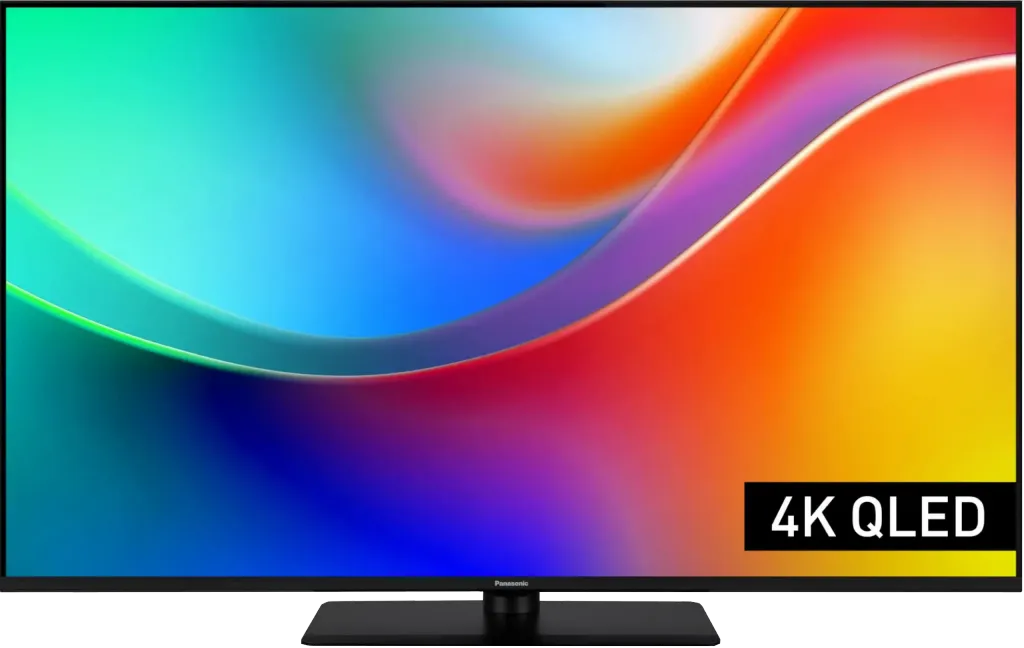
Complete the survey to find out the result
Panel type: LCD VA Refresh rate: 144Hz Brand: PANASONIC Resolution: 3840x2160 System: Amazon FireTV Model year: 2025
Panasonic has been associated with premium televisions for years – those that mainly appeal to discerning cinema lovers and are not commonly seen on every second showroom shelf. But the W85B is meant to be a bit different. It’s Panasonic’s most affordable television with a 120 Hz refresh rate (and even 144Hz) and probably the first model in a long time that is meant to show that the brand can prepare something more "down-to-earth," aimed at the everyday user. Not everyone needs a flagship OLED for several thousand dollars – sometimes a solid screen for everyday movies, sports, and gaming is enough. How has Panasonic handled such a task? Is the W85B really proof that the Japanese can come down from their pedestal and create a television closer to ordinary needs while still maintaining their quality? Let’s find out!
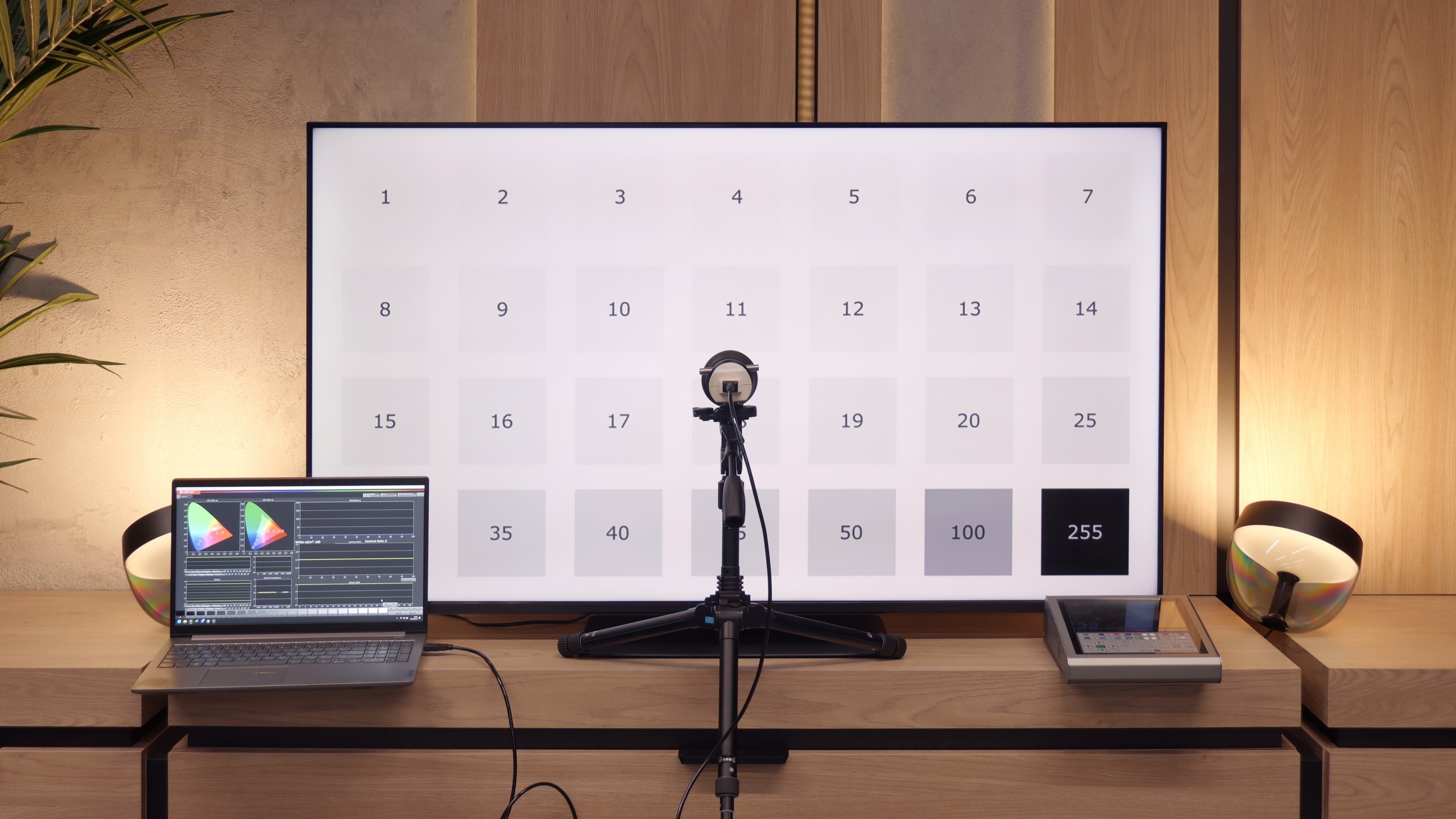
PANASONIC W85B - Our verdict
6.1
Overall rating
The Panasonic W85B is a television that aims to prove that the Japanese brand can produce not only high-end devices but also something more "for the people." And indeed — on paper, it looks quite good: a VA panel with solid contrast, high refresh rates of 120/144 Hz, two full HDMI 2.1 ports, and low input lag. It sounds like an excellent set for a gamer or someone who simply wants a cheap television with good fundamentals. However, the reality is a bit more complicated. The W85B performs well primarily with SDR content, especially after calibration, and it will suit typical daily use. But when we start to demand more from it — e.g. expecting strong HDR effects or greater immersion in games with that mode enabled — the television quickly reveals its limitations. Its brightness is low, and the lack of local dimming is noticeably problematic during evening viewing. Therefore, we see the W85B more as a "daily" television — ideal for someone who watches terrestrial TV, YouTube, or streaming in SDR and wants to connect a console or PC at 120/144 Hz (but without HDR). In that role, it works very well. Is it a television for everyone? Definitely not. But if we accept its limitations and approach it without lofty expectations, the W85B can deliver quite a bit of enjoyment for relatively reasonable money.
Advantages
VA matrix with high native contrast
High refresh rate of 120/144 Hz
Two HDMI 2.1 ports with support for ALLM, VRR, and Dolby Vision in gaming
Very low input lag
Fairly good colour gamut coverage thanks to the QLED filter
Support for multiple HDR formats including Dolby Vision and HDR10+
Sturdy central stand
Great compatibility with PC – full chroma 4:4:4, clear fonts
Disadvantages
Low brightness (below 270 nits) – no real HDR
HDR mode in games is poorly refined, with incorrect HGiG implementation
Poor multimedia file player
The FireTV system in Europe is poorly refined: there are micro stutters and awkward translations, lacking many apps
Average sound quality, lacking depth
Motion smoother won’t work
Movies and series in UHD quality
5.5
Classic TV, YouTube
5.8
Sports broadcasts (TV and apps)
5.8
Gaming on console
7.7
TV as a computer monitor
8.6
Watching in bright light
4.2
Utility functions
6.8
Apps
7.6
Sound quality
5.8
Complete the survey to find out what fits your preferences
PANASONIC W85B - Competing TVs in this price range
PANASONIC W85B - TV appearance
HDMI inputs: 1 x HDMI 2.0, 2 x HDMI 2.1 (48Gbps) Outputs: Toslink (Optical audio), eARC (HDMI), ARC (HDMI), Mini-Jack (Headphones) Network Interfaces: Wi-Fi 2.4GHz, Wi-Fi 5GHz, Ethernet (LAN) 100Mbps
Build quality: Average
Stand type: Central
Bezel colour: Graphite
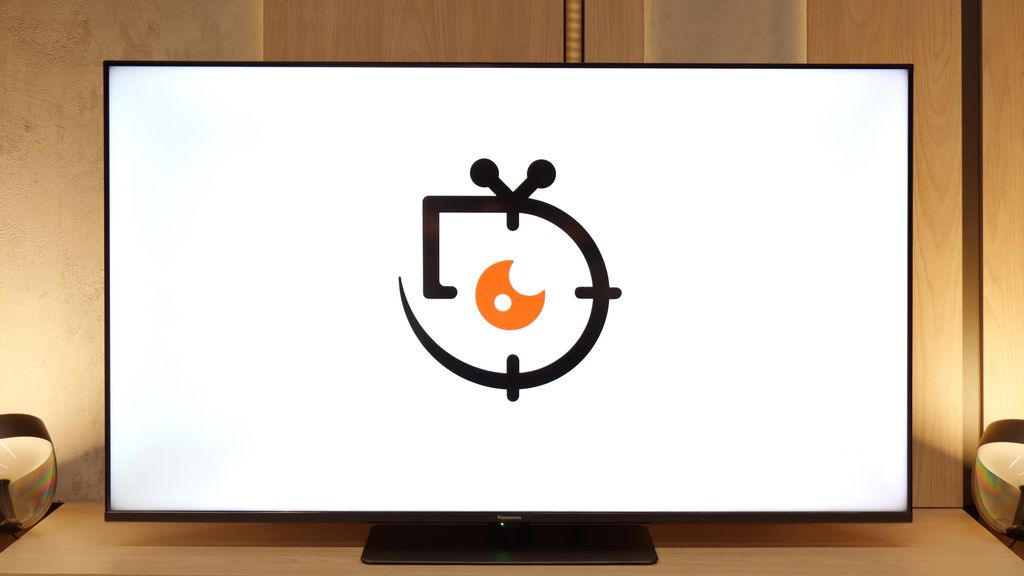
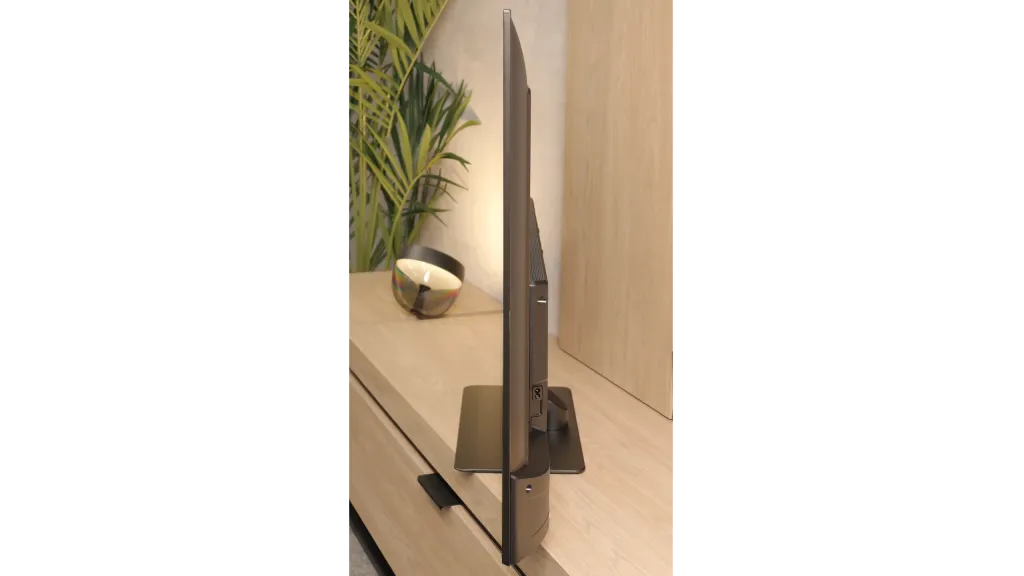
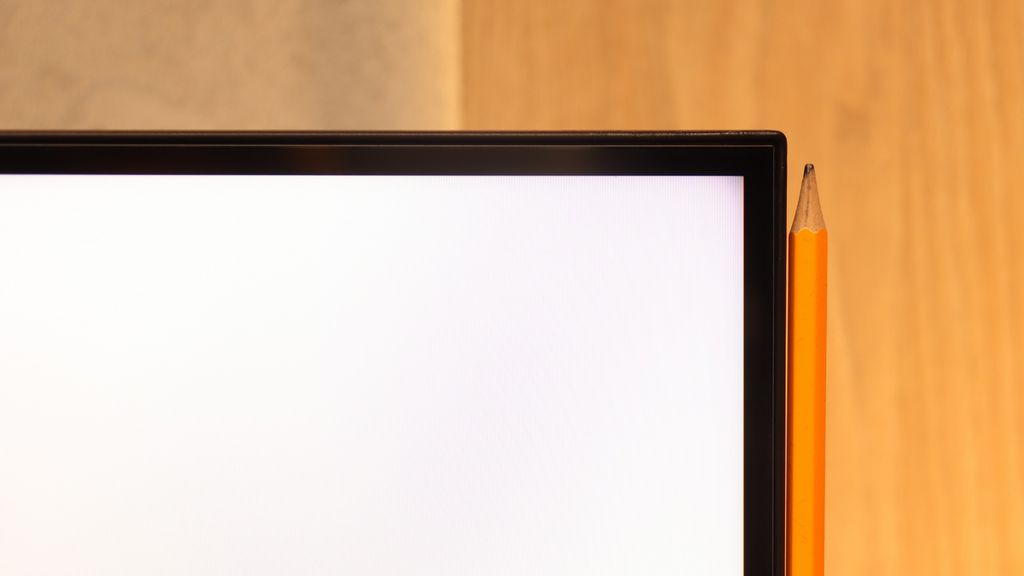
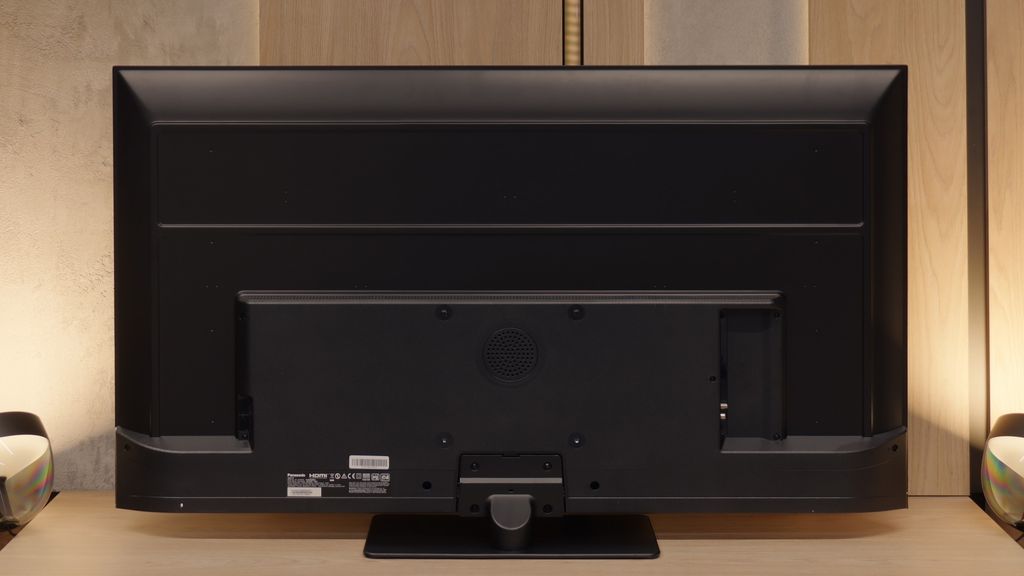
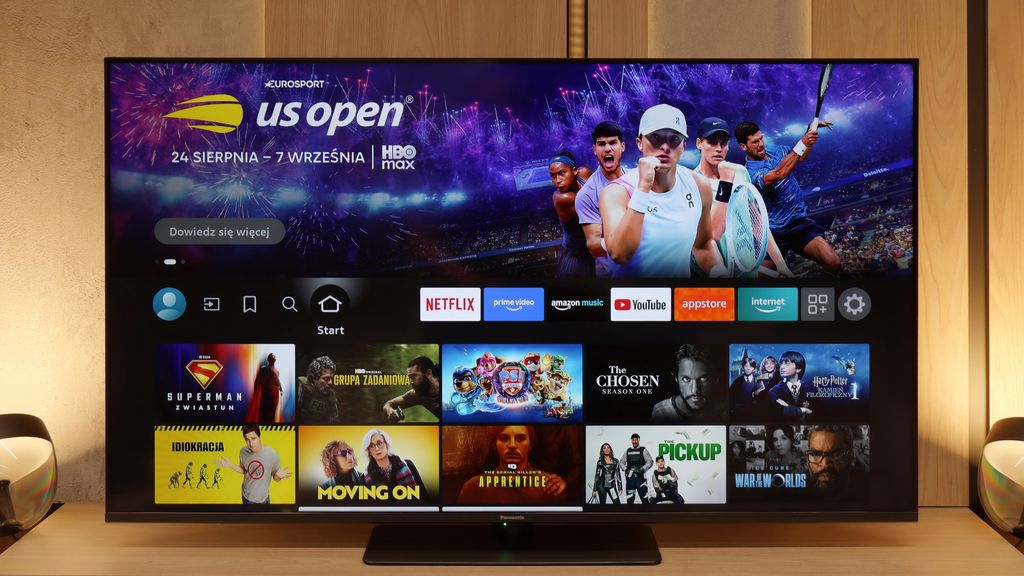
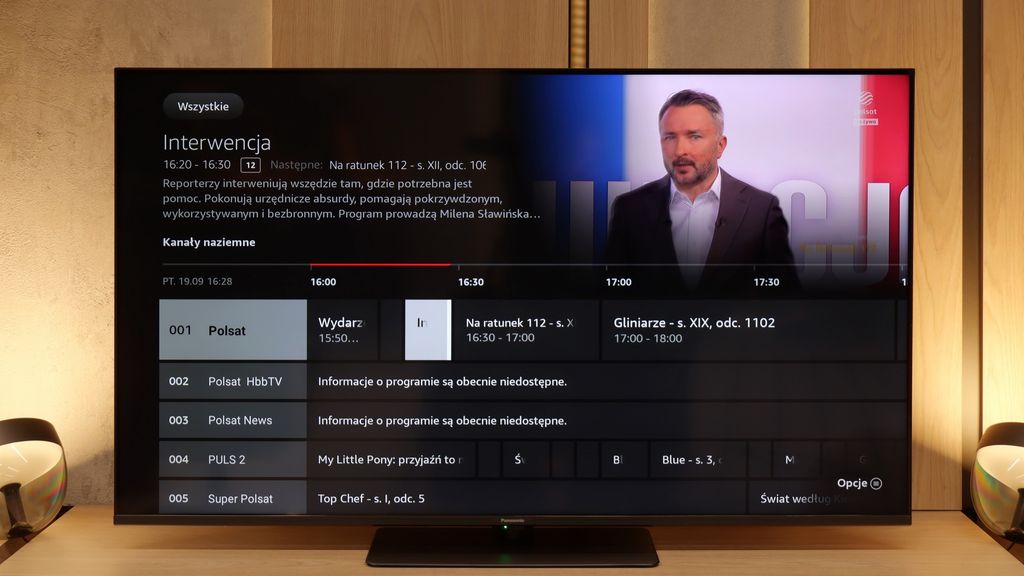
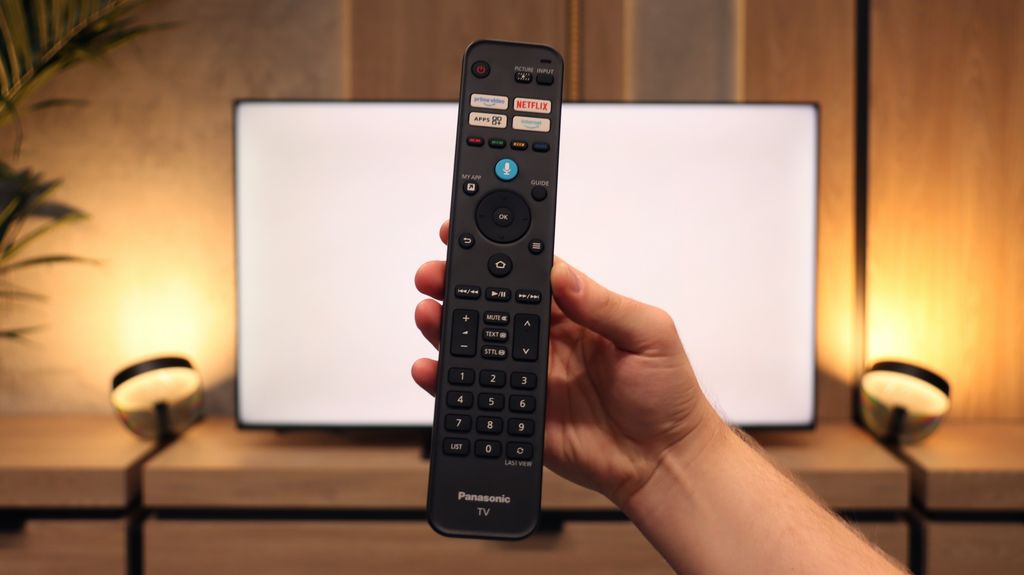
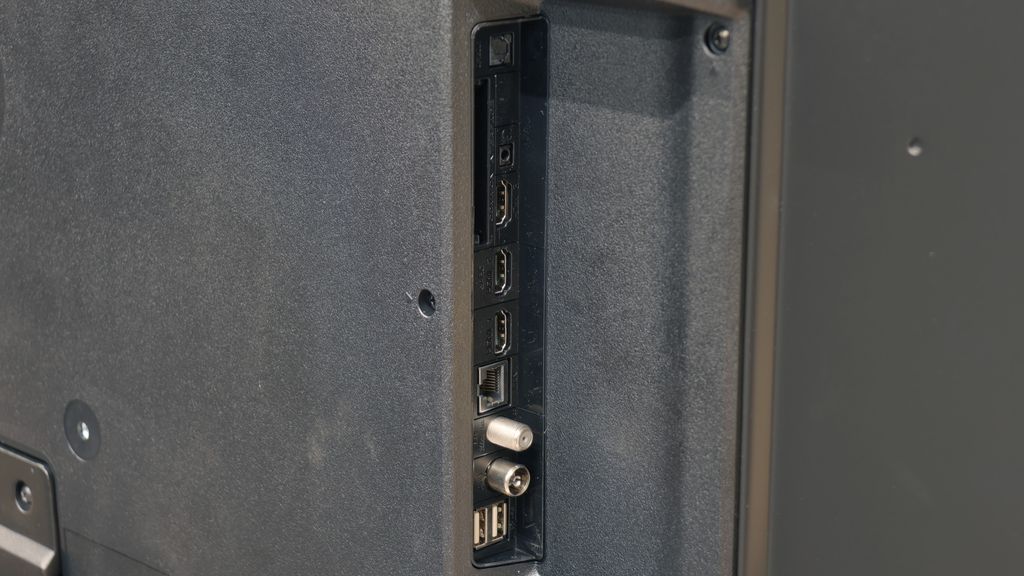
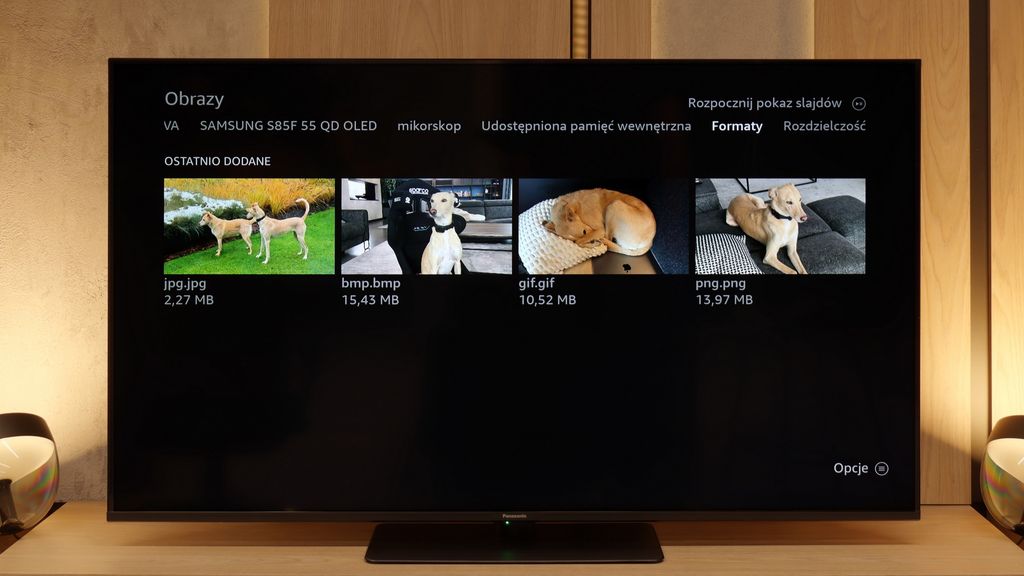
Stand: Fixed
Flat design: No
Accessories: Stand
Looking at the Panasonic W85B from the front, it’s really hard to have any significant complaints. It’s a mid-range model, yet it looks quite elegant – the bezels are slim, maintained in a dark, graphite colour, and the characteristic thickening at the bottom doesn’t spoil the overall appearance. In the living room, it simply looks neat, and at first glance, no one would say it’s a budget construction. However, when we look at the back, it’s immediately clear what kind of equipment we’re dealing with. The shape is quite bulky, and the casing made from a mix of plastic and metal doesn’t give off a “premium” feel. Additionally, the television is relatively thick, so it can’t be hung flush against the wall like other thin constructions. On the plus side, the central stand is a single, solid one that provides a sense of stability. Thanks to this, the television stands firmly, and placing it on a narrower table isn’t a problem. And I think that’s what it was all about – making sure the W85B isn’t a piece of art to be viewed from the side, but rather a television for everyday use that is primarily functional.
Buy in the best price
Select size:
PANASONIC W85B - Contrast and black detail
5.3/10
Local dimming function: No

Result
4,300:1

Result
4,250:1

Result
4,200:1

Result
4,400:1

Result
3,150:1
Visibility of details in the lights:
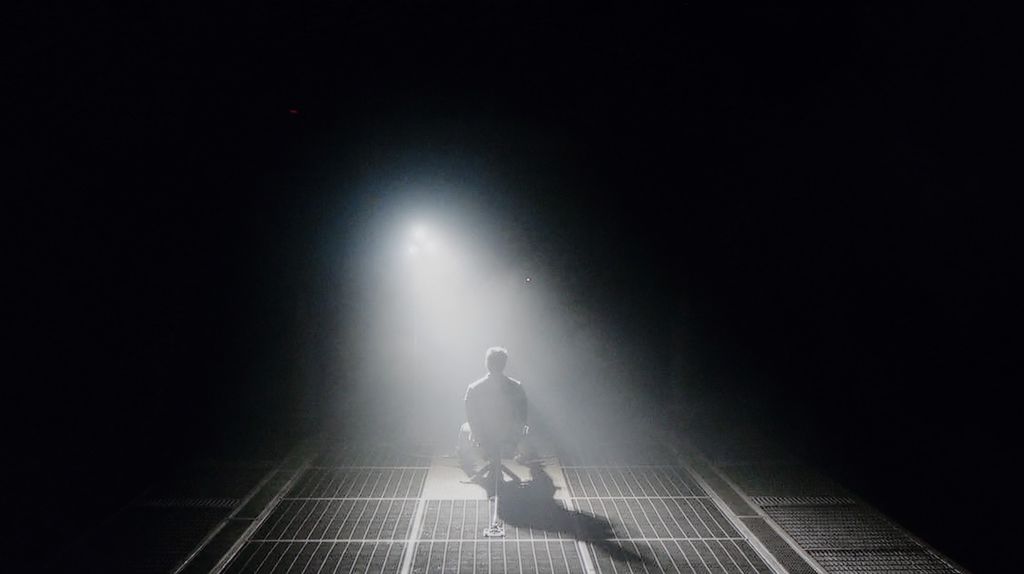
W85B is Panasonic's entry-level LCD, so you shouldn't expect miracles in this category, but… the VA panel really does a great job here. Its biggest advantage is simply better contrast than in popular IPS panels – there, blacks often look like grey, but here you can actually see deeper tones. In the scenes we tested, the contrast held around 4000:1, which translates to roughly four times better performance than in IPS displays. Of course, there's no local dimming, so in challenging conditions, when the room gets really dark, the blacks can resemble navy more than absolute pitch black. This is the difference you can see when comparing it to OLEDs or Mini-LEDs. But for everyday viewing – series, matches, evening movies in the living room – this contrast is more than sufficient. The image has the right depth, and the W85B does not give the feeling of a “washed-out” television.
PANASONIC W85B - HDR effect quality
4.2/10
Supported formats: HDR10, HDR10+, Dolby Vision Color gamut coverage: DCI P3: 95.6%, Bt.2020: 75.0%
Luminance measurements in HDR:

Result
228 nit

Result
249 nit

Result
283 nit

Result
282 nit

Result
297 nit
Unfortunately, we don't have good news here. The Panasonic W85B is quite a dark television – its peak brightness doesn't exceed 300 nits, making it hard to talk about any real HDR effect. In practice, this means that scenes which can 'shine' and impress on other screens simply look like regular SDR with a slight colour boost here. Our measurements and film tests confirmed this – regardless of the content, the W85B won't draw anything more from HDR. So if someone is looking for a television specifically for HDR, it's better to look at other models. On a positive note, the W85B does quite well in terms of colours. It's a QLED television, so its colour gamut coverage is wide, and most films and series look natural, without a noticeable 'faded' effect. The colours are saturated, so in everyday viewing, there's no feeling that something is seriously off.
Scene from the movie “Pan” (about 2800 nits)

Scene from the movie “Billy Lynn” (about 1100 nits)

Now that we know that the Panasonic W85B is not one of the brightest TVs, one might hope that "Japanese engineering" could draw something more from such a panel. Unfortunately, we don’t have good news here. The W85B struggles completely with content prepared for the best image quality. The picture is excessively dim in practically every scenario – whether it's a demanding sequence from Pan or somewhat simpler scenes from Billy Lynn. This is simply not a television for watching movies in HDR. There's a lack of dynamism, a lack of the "wow" effect, and even the colours – though thanks to QLED technology they are quite decent – cannot save this experience. It’s more of a screen for daily SDR content rather than for screenings where cinematic quality and a strong impact matter.
HDR luminance chart:
HDR luminance
Fortunately, the situation isn't as hopeless as it might seem based on the brightness measurements alone. When we fire up most movies in HDR, the W85B really doesn’t have its capabilities for flexible image adaptation to different content. Static HDR10 performs very poorly here – the image is simply overexposed throughout, resulting in a lack of detail and dynamics. But… formats based on dynamic metadata come to the rescue. The TV supports both Dolby Vision and HDR10+, and it’s these that save the W85B from despair. Our test images show this best – suddenly, more details are visible, the scene gains depth, and the contrast becomes more convincing. And here lies a paradox – if the W85B were limited to just HDR10, it would be hard to recommend it for movie viewing at all. However, since most streaming platforms offer films in Dolby Vision, it's in this format that content is best watched on this TV. This way, disappointment can be avoided, and you can extract as much as possible from this model.
Static HDR10

Dynamic: Dolby Vision

Factory color reproduction
4.2/10
Testing the Panasonic W85B, we obviously started with the Filmmaker mode, as it's the gold standard for watching content "the way the director intended." The problem is that this TV is quite far from those intentions. The biggest issue turned out to be an excess of red – both in SDR and HDR. The image often looked too warm because of this, and in some scenes, it was almost "on fire." Added to this is the issue of brightness management. When we looked at the gamma and EOTF charts, it was clear as day that in most scenes, the TV brightens the image more than it should. The effect was easy to predict. Details can get lost, leading to flattening and clipping across the entire screen. We obviously know how to fix this, but to be fair, it does require a lot of calibration work. Out of the box, the W85B doesn't produce an image close to reference quality – it's more of a TV that, without professional adjustments, will always interpret colours and brightness a bit "in its own way." Unfortunately, this is to the detriment of the viewer.
Color reproduction after calibration
6.9/10
Fortunately, calibration made a significant difference for the Panasonic W85B, especially for SDR content. Here, the improvement was quite evident – we managed to even out the white balance and reasonably tame the TV's tendency to overly brighten the entire image. The picture became more coherent and the colours gained the naturalness that was lacking in the factory settings. Admittedly, the results from the Color Checker are not perfect, as the W85B has noticeable issues with green saturation, but overall, we rate the post-calibration effect in SDR quite positively. The situation with HDR is a bit different. Here too, we managed to reduce the tendency to warm up the entire scene, so the image performed definitely better than in the factory settings. However, there is still the same problem we mentioned earlier – the TV interprets the image too strongly "in its own way" and brightens the whole screen. And the lack of local dimming only exacerbates this effect. In summary, briefly, in SDR content, the W85B performs really well after calibration and is perfectly suitable for everyday viewing. However, in HDR, even after adjustments, it is still difficult to unambiguously recommend it for more serious viewing.


PANASONIC W85B - Smoothness of tonal transitions
9.1/10
Here we can calmly praise the Panasonic W85B. The TV handles colour blending and tonal transitions remarkably well. Gradients appear smooth, without visible banding or artificial contours. As a result, the image gains a sense of naturalness, and sequences with a lot of subtle shades – like the sky or blurred backgrounds – look exceptionally good for this class of equipment.
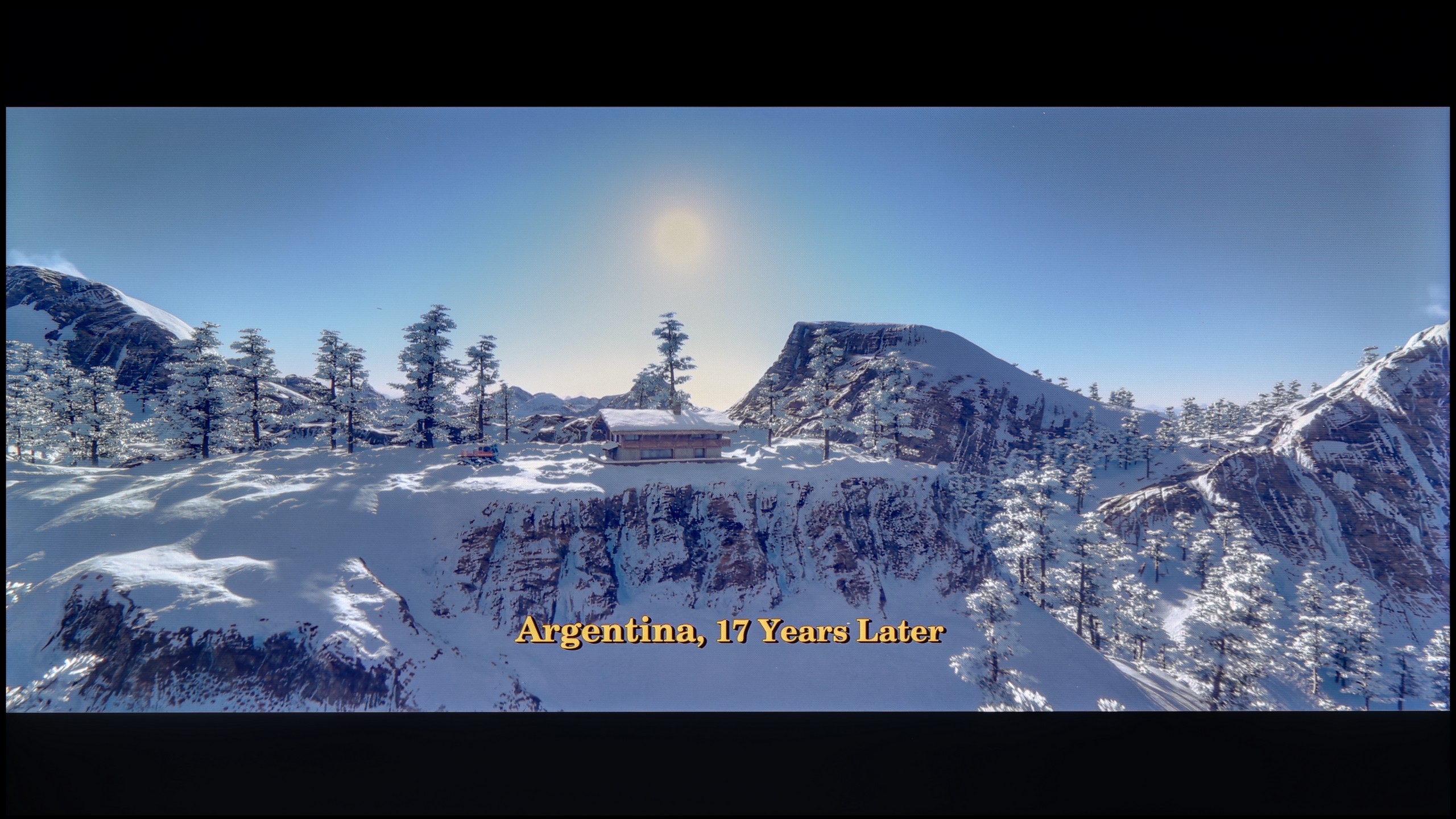


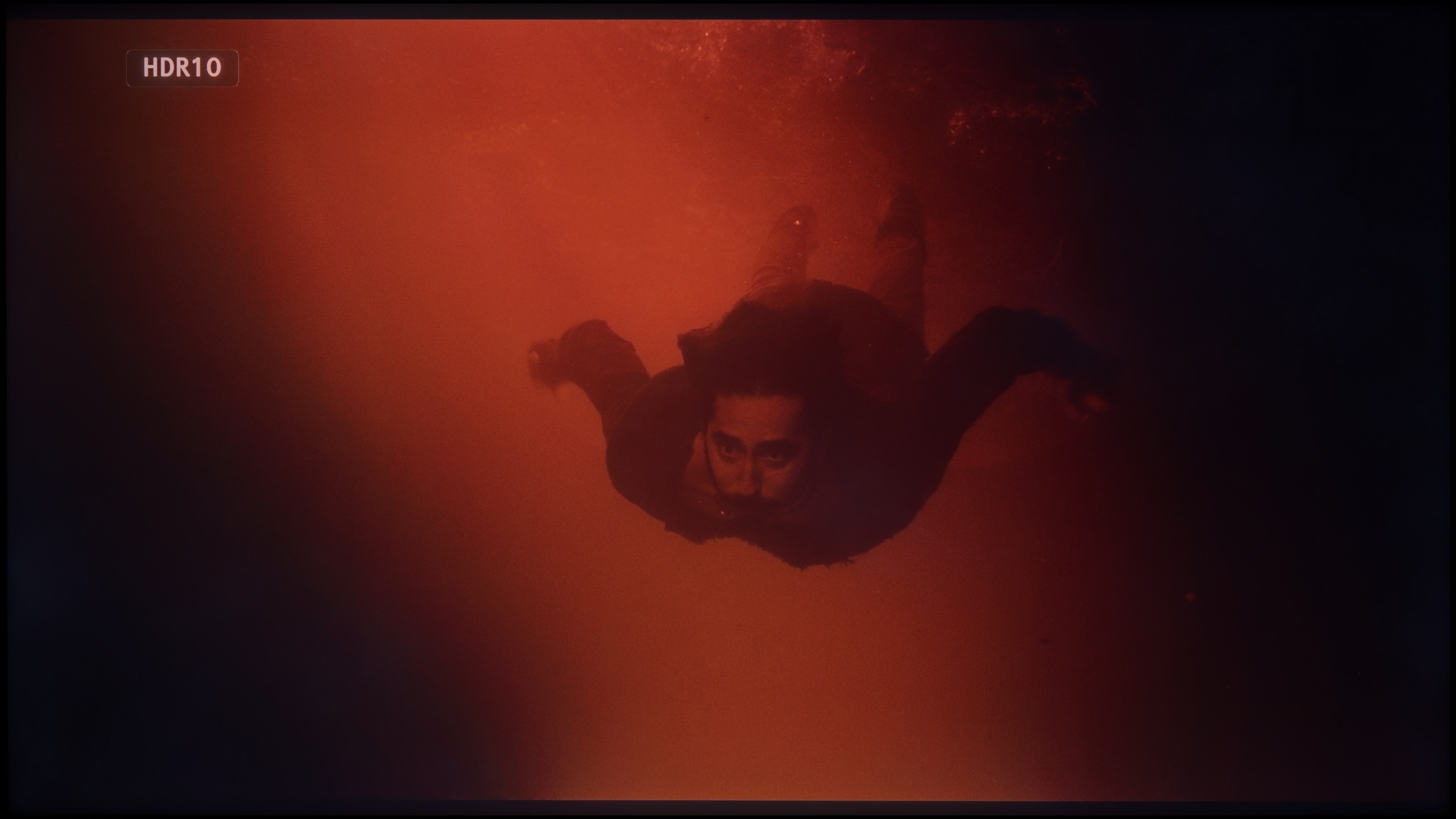




Image scaling and smoothness of tonal transitions
6/10
Smooth transition function

Image without overscan on the SD signal

With native SDR content, the Panasonic W85B performs very well – tonal transitions are smooth and natural, without artificial bands or clear outlines. However, the situation is worse with lower resolution materials. This is where the TV has the biggest problem with "beautifying" the image. The lack of any menu option to improve gradation means that with older films or materials from YouTube, one can sometimes notice slight issues with colour blending.
Fortunately, upscaling, or enhancing the quality of lower resolution content, performs much better. This is definitely a strong point of this model – the image is scaled cleanly and in detail, and the TV handles this better than one might expect from such an inexpensive setup. This is thanks to the HCX processor, which Panasonic has been developing for years, and it shows that even in the lower series, it can do a good job.
PANASONIC W85B - Blur and motion smoothness
6.5/10
Maximum refresh rate of the panel: 144Hz
Film motion smoothing option: No
Blur reduction option: No
BFI function 60Hz: No
BFI function 120Hz: No
Brightness drop with BFI: 77%
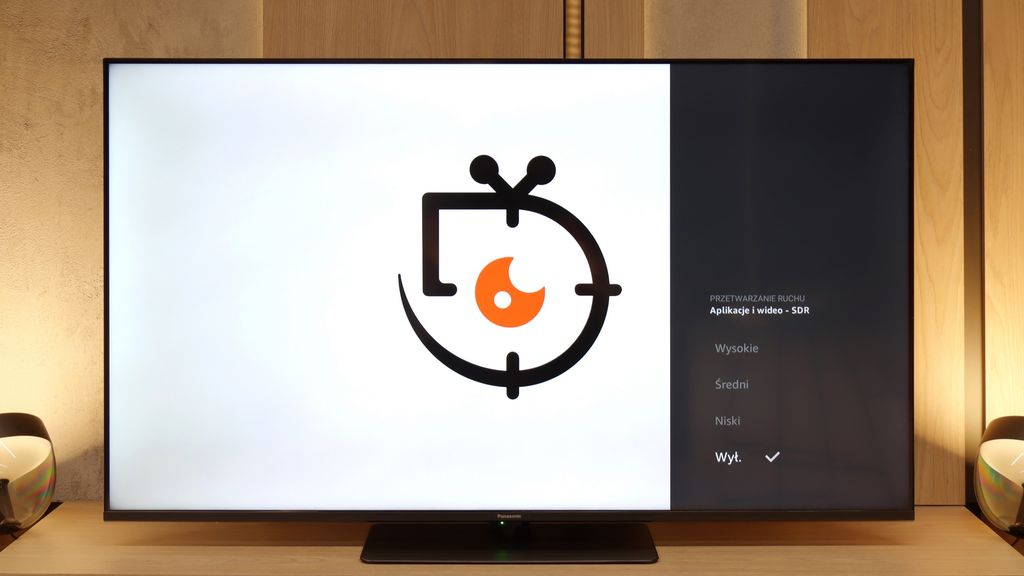
At first glance, everything looks good – the Panasonic W85B has a 120 Hz panel and even a 144 Hz mode, so it seems like it should handle smooth motion really well. The problem starts when we delve into the settings. The options for improving fluidity are supposedly present in the menu, but in practice… they don't change anything. No matter what we choose, the image looks the same. On top of that, there’s a lack of BFI, or black frame insertion, which in many TVs helps sharpen motion. And suddenly, it turns out that despite the strong panel, the W85B doesn’t give us any real tools to adjust that motion to our needs. It’s only good when the source itself operates at a higher frequency – for example, games at 120 Hz. But when it comes to movies or sports, we just have to accept what the TV shows us because there’s nothing more that can be done about it.
Blur (native resolution, maximum refresh rate):



Smużenie (4K@144Hz):



PANASONIC W85B - Console compatibility and gaming features
8.5/10
ALLM: Yes
VRR: Yes
VRR range: 48 - 144Hz
Dolby Vision Game Mode: Yes
Correct implementation of HGIG: No
1080p@120Hz: Yes
1440p@120Hz: Yes
4K@120Hz: Yes
Game bar: Yes
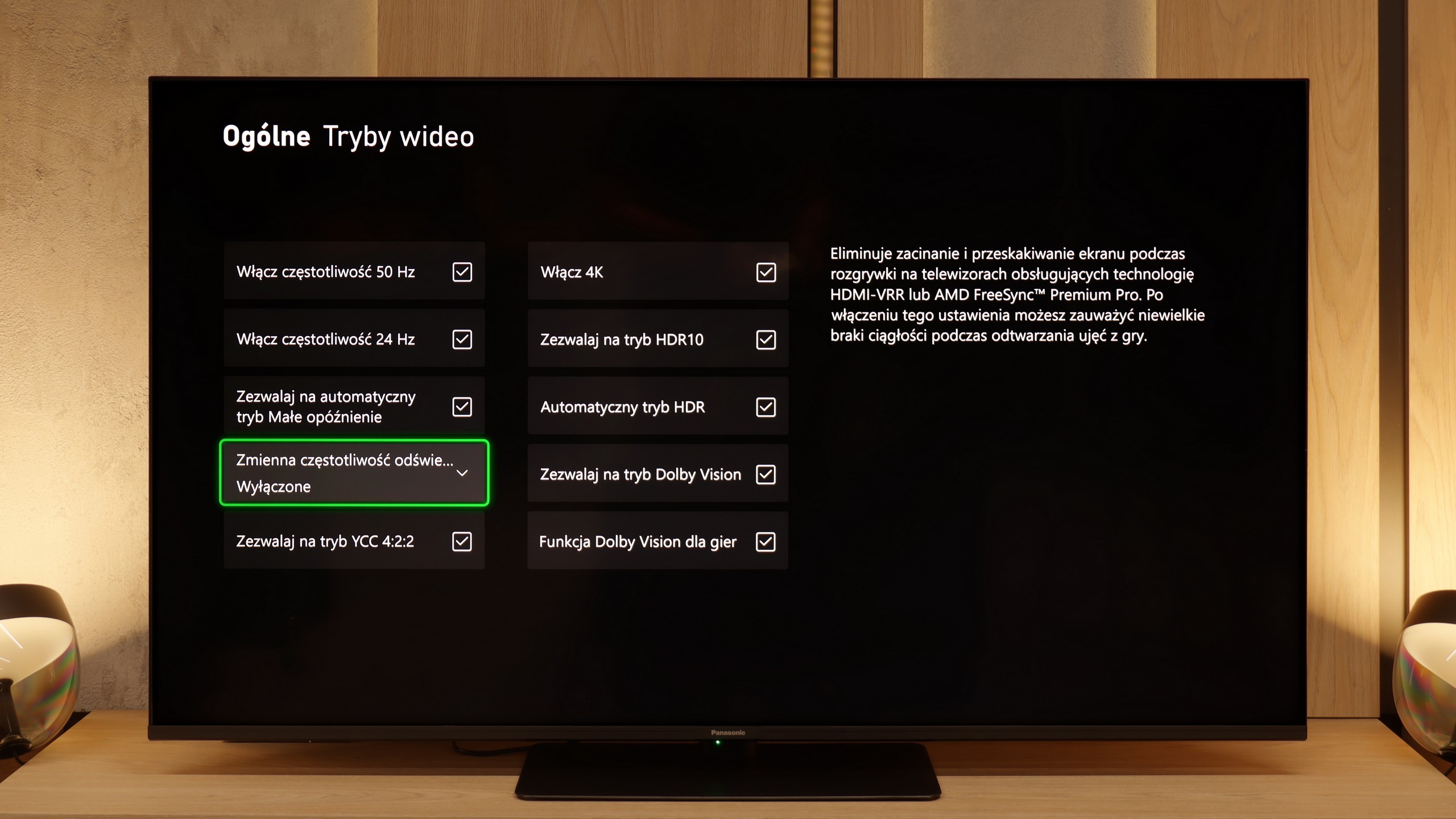
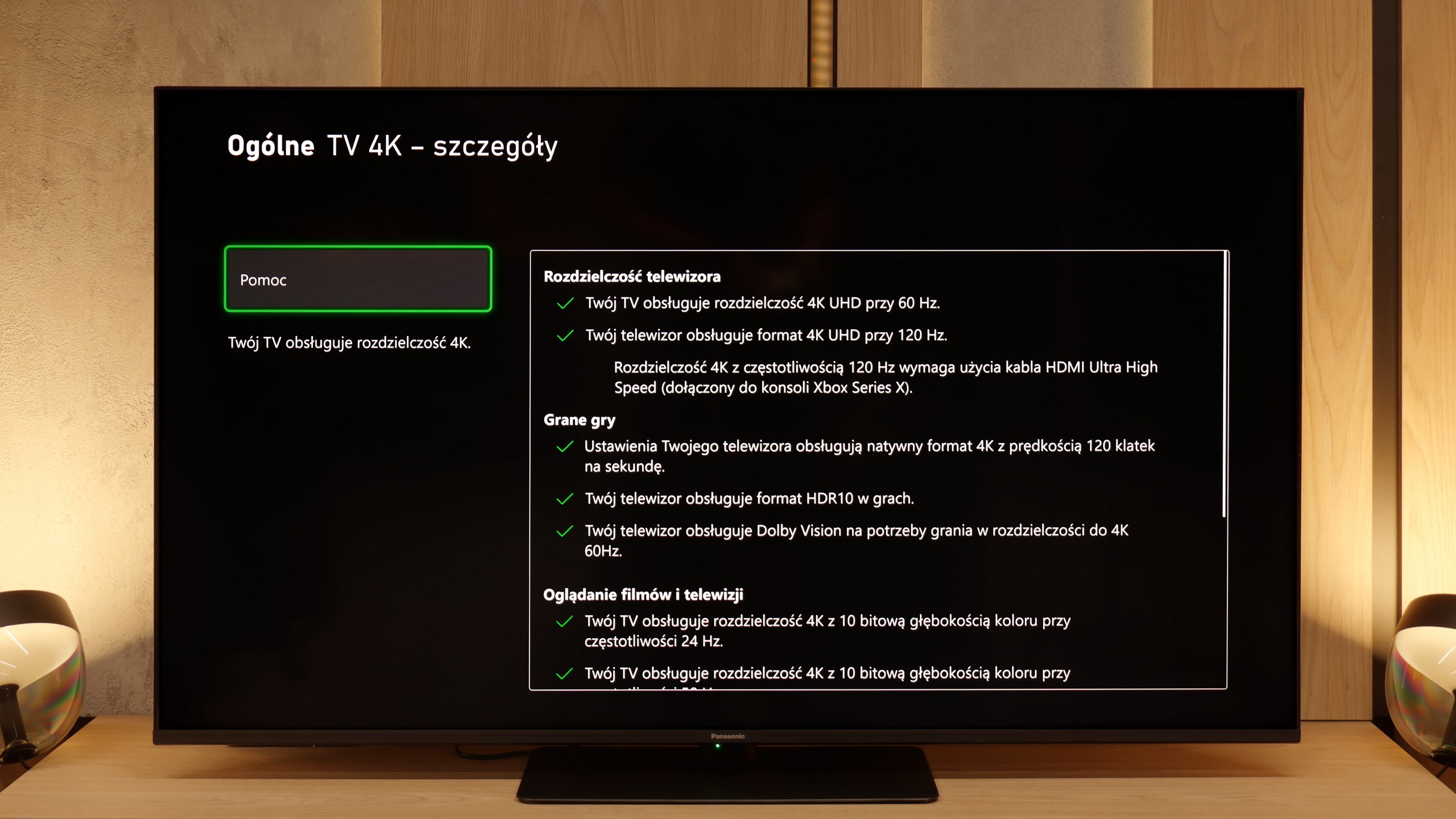
On paper, the Panasonic W85B looks really solid. It has two full HDMI 2.1 ports, support for ALLM, variable refresh rates, Dolby Vision in games, and of course, a high refresh rate for the panel itself. Additionally, there's the characteristic Panasonic game bar, which allows you to view key parameters with a single click and quickly change them if needed. It sounds great, but the problem arises when we enable HDR. Here, the W85B really struggles because the implementation of HGiG is practically nonexistent – the TV poorly manages brightness, and instead of faithful images, we get scenes that are too bright, sometimes even blown out. The solution? The simplest one – turn off HDR in the console settings and keep everything in SDR. And here it gets really interesting, because in this scenario, the W85B shows its better side. Low input lag, high smoothness thanks to 120 Hz – all of this makes gaming look phenomenal. Yes, HDR can be skipped, but if responsiveness and smooth gameplay are the priorities, the W85B provides plenty of fun.
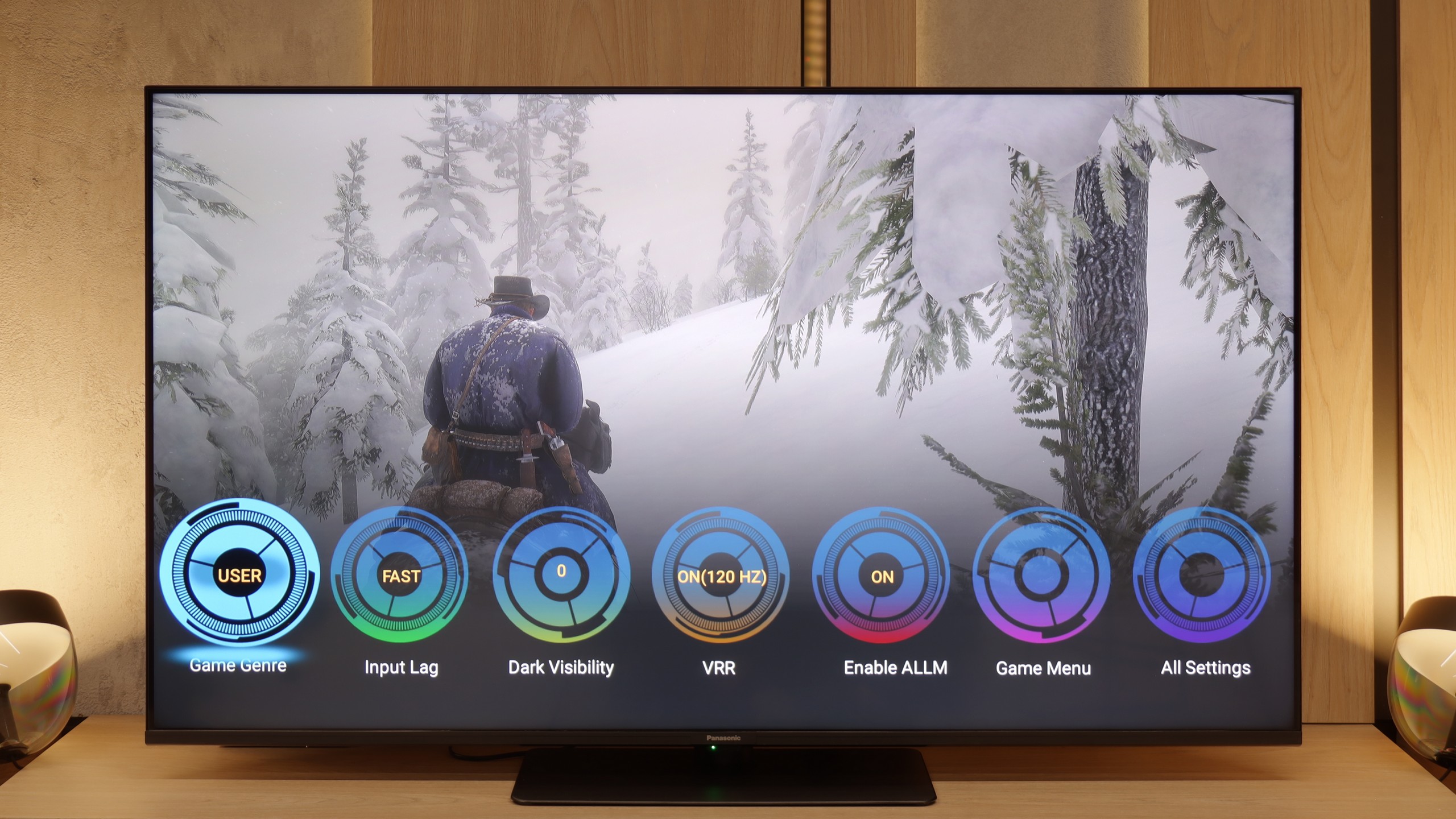
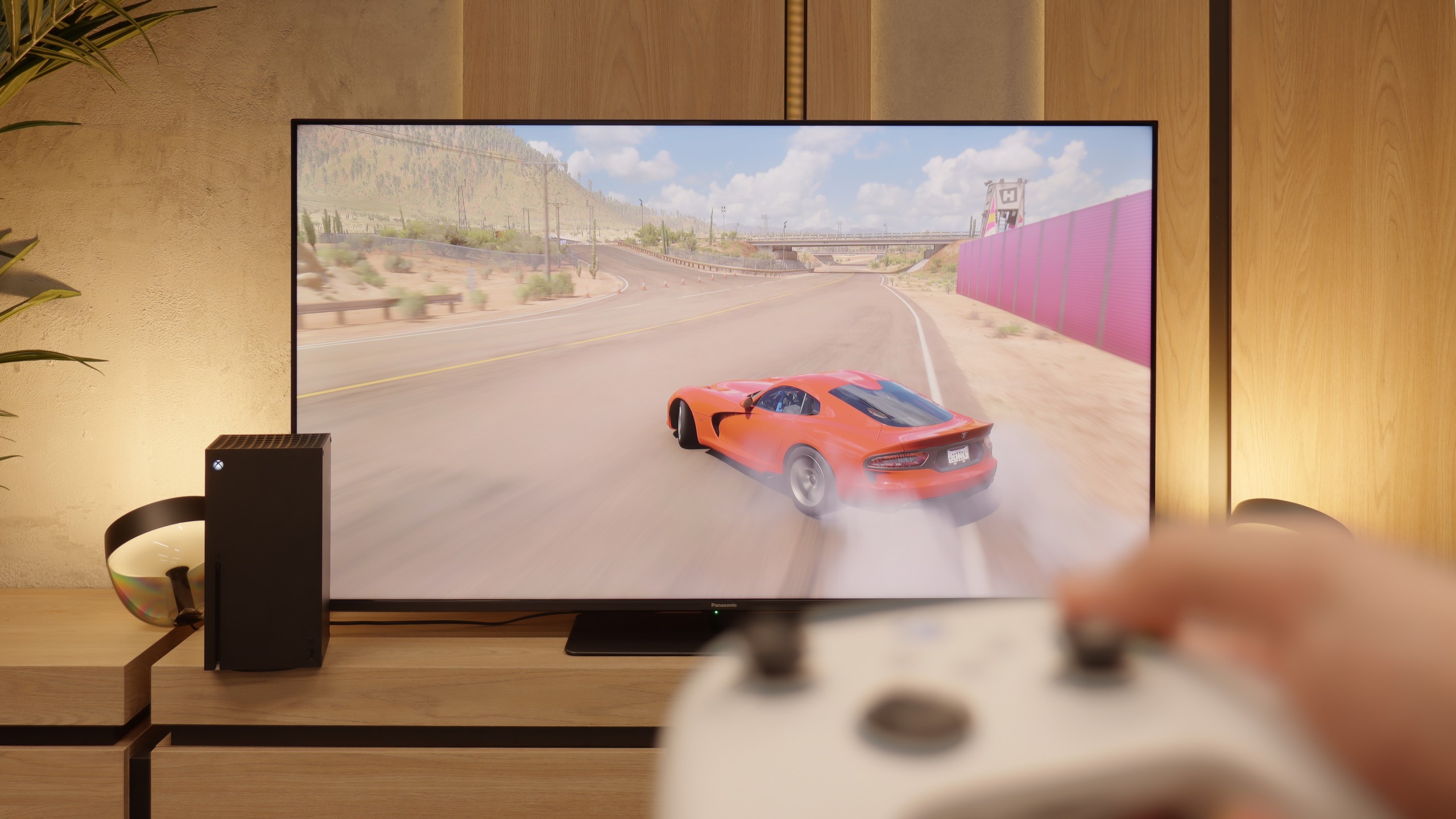

PANASONIC W85B - Input lag
9.8/10
There’s really nothing to worry about here. The Panasonic W85B reacts instantly to our movements, and the values measured in tests can easily compete with gaming monitors. At a 120 Hz signal, the input lag is around 8–10 ms, and at 60 Hz it hovers around 17–20 ms. In practice, this means one thing – no delays, no frustration! You press the button, and the action happens immediately on the screen.
| SDR | HDR | Dolby Vision |
|---|---|---|
| 1080p60: 17 ms | 2160p60: 17 ms | 2160p60 DV: 17 ms |
| 1080p120: 8 ms | 2160p120: 8 ms | 2160p120 DV: 10 ms |
| 2160p60: 17 ms | ||
| 2160p120: 8 ms |

PANASONIC W85B - Compatibility with PC
8.6/10
Chroma 444 (maximum resolution and refresh rate): Yes
Font clarity: Very Good
Readability of dark text and shapes: Good
Input lag in PC mode (4K, maximum refresh rate): 8ms
Matrix subpixel arrangement: BGR
Max refresh rate: 144Hz
G-Sync: Yes
The Panasonic W85B performs surprisingly well as a computer monitor. It is perfect for office work – the fonts are sharp and very readable thanks to full 4:4:4 chroma support, so writing, browsing the web, or working on spreadsheets is a breeze. But the real "fun" starts when gaming. The TV handles up to 144 Hz refresh rates for PC effortlessly, and it supports popular image synchronisation technologies like NVIDIA G-Sync and AMD FreeSync. This means we don't have to worry about screen tearing or micro-stuttering – gameplay is smooth and looks simply fantastic.
PANASONIC W85B - Viewing angles
3.2/10
Brightness drop at an angle of 45 degrees: 77%
Here you can see the biggest price we pay for the high quality of the VA matrix contrast. The W85B, like most TVs with this type of panel, doesn't perform well when viewed at wider angles. Colours lose intensity and the image begins to fade as soon as you move away from the screen's axis. This is not a flaw of Panasonic itself, but rather a characteristic of VA technology – great contrast in exchange for poorer viewing angles. So, if you plan to watch movies with a larger group and often sit "off to the side", it's something to keep in mind.
PANASONIC W85B - TV efficiency during daytime
4.2/10
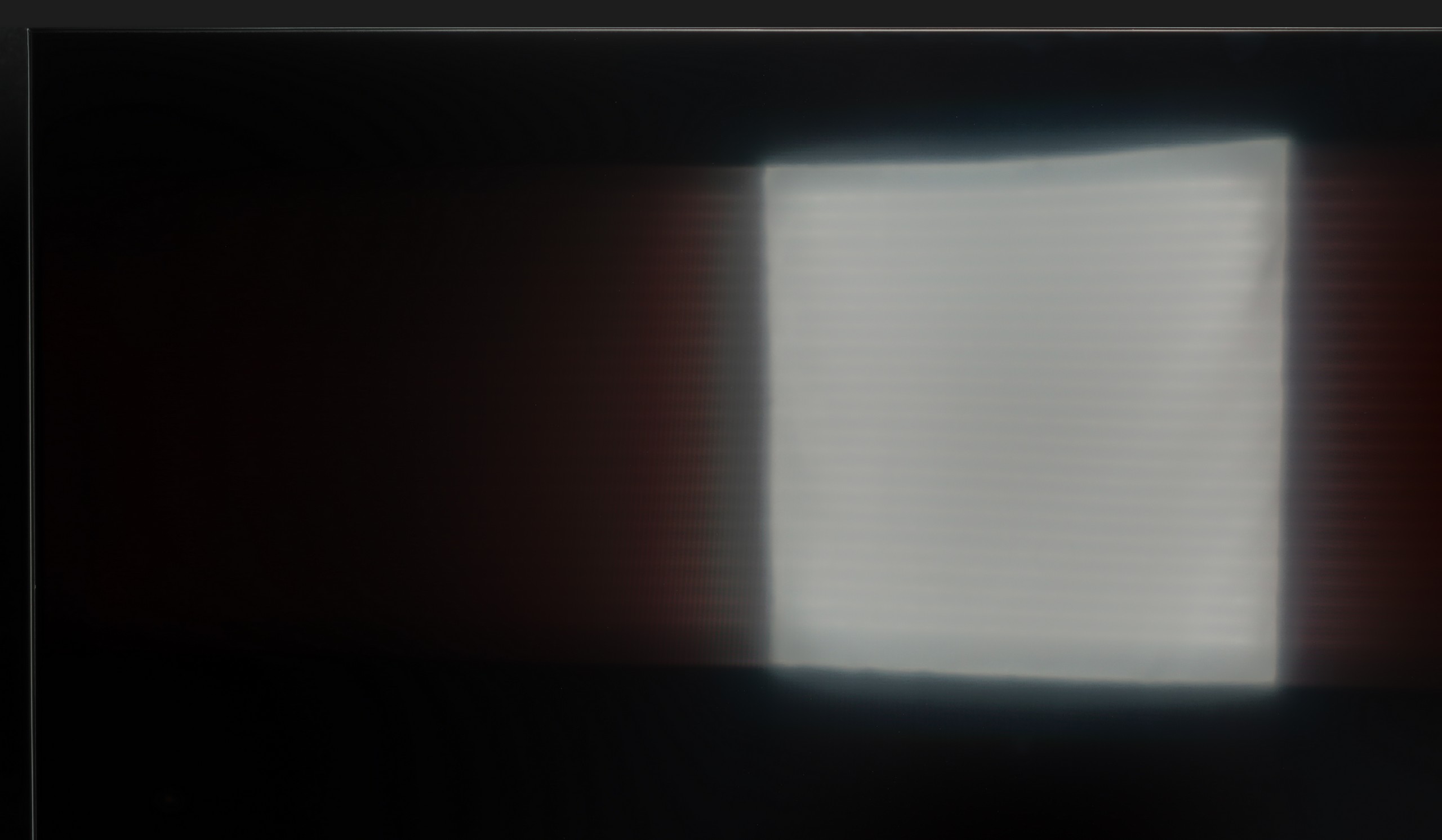

Matrix coating: Satin
Reflection suppression: Good
Black levels during daytime: Good
The Panasonic W85B features a satin-finished panel that does quite well in reducing reflections and maintaining colours even in bright light coming from windows or lamps. There’s no ‘mirror’ effect here, so in a typical lounge during the day, watching TV is comfortable. However, the problem arises when you’re in really bright rooms – the TV doesn’t have high brightness, so it won’t cut through very strong sunlight. It’s simply a screen that performs best in controlled conditions.
Matrix brightness
Average luminance SDR
Panasonic W85: 263 cd/m2
PANASONIC W85B - TV features
6.8/10
System: Amazon FireTV
System performance: Average
- HDMI inputs: 1 x HDMI 2.0, 2 x HDMI 2.1 48Gbps
- Outputs: Toslink (Optical audio), eARC (HDMI), ARC (HDMI), Mini-Jack (Headphones)
- Network Interfaces: Wi-Fi 2.4GHz, Wi-Fi 5GHz, Ethernet (LAN) 100Mbps
- TV reception: DVB-T, DVB-T2, DVB-S, DVB-S2
Classic features:
Recording to USB (terrestrial TV): Yes
Recording programming: No
Picture in Picture (PiP): No
RF remote control (no need to aim at the screen): RF
Backlit remote control: No
Teletext: Yes
Audio only mode: Yes
Bluetooth headphones support: Yes
Simultaneous Bluetooth headphones & TV audio: Yes
Smart features:
AirPlay: Yes
Screen mirroring (Windows Miracast): Yes
Voice search: Yes
Voice search in native language: No
Ability to connect a keyboard and mouse: Yes








SmartTV: FireTV
The W85B runs on the Fire TV system and it must be said – it’s a significant step forward compared to Panasonic's previous proprietary solutions. We have support for AirPlay, screen mirroring, and even voice control via Alexa. It sounds modern and, in practice, it actually offers quite a lot of possibilities. The problem is that in Europe Fire TV still looks a bit like a “guest with luggage.” It works decently, but there are occasional micro-stutters, the interface doesn’t always respond as smoothly as we would like, and the menu can have awkward translations. It’s not yet at the level of the biggest players like Google TV or even Tizen, but it's still an improvement over what Panasonic had before. The worst part of it all is that the Fire TV app library is quite modest, and that is its biggest drawback.
Classic TV Functions
In terms of typical TV features, it’s quite good – we have a classic remote with a full numeric keypad, a clear EPG guide, and the ability to record programs from the built-in tuner onto an external USB drive (e.g. a flash drive). The downside is the lack of an option to schedule recordings in advance – you can record “here and now,” but can't set recordings for later.
Sound connection options
HDMI audio:
Other audio outputs:
Toslink: Yes
Stereo (Mini-Jack): Yes
Wireless audio:
Bluetooth: Yes
Obsługiwane formaty audio:
Dolby Digital Plus 7.1: Yes
Dolby True HD 7.1: No
Dolby Atmos in Dolby Digital Plus (JOC): Yes
Dolby Atmos in Dolby True HD: No
DTS:X in DTS-HD MA: No
DTS-HD Master Audio: No
Ułatwienia dla seniorów
Numeric keyboard on TV: Yes
Font size adjustment: No
Audio description: Yes
PANASONIC W85B - Apps
7.6/10























PANASONIC W85B - Playing files from USB
3.1/10

| Maximum photo resolution: | Supported photo formats: |
|---|---|
The biggest pain point of the built-in player with Fire TV is the lack of support for external subtitle files. If you have your own movie library and use text files, you simply won't be able to display them on this TV. The player itself handles basic video formats, but if someone wants to fully utilise files from USB, they'll probably end up installing an additional app from the store (e.g., VLC).
PANASONIC W85B - Sound
5.8/10
87dB
Maximum volume
Supported codecs
(TV speakers)
Dolby Digital Plus 7.1
Dolby True HD 7.1
Dolby Atmos in Dolby Digital Plus (JOC)
Dolby Atmos in Dolby True HD
DTS:X in DTS-HD MA
DTS-HD Master Audio
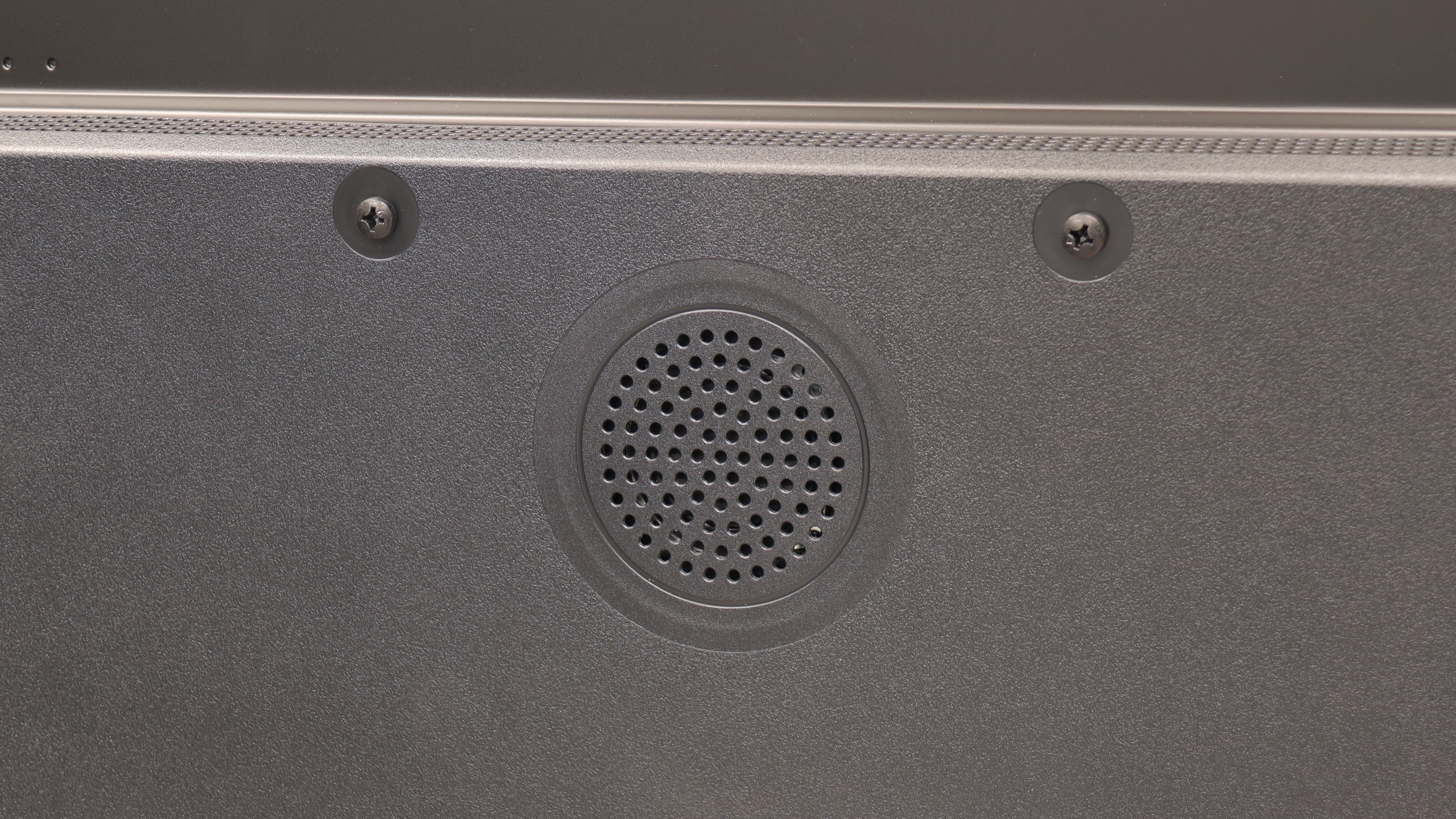
Here the Panasonic W85B unfortunately has nothing to brag about. The speakers sound flat and quite “plasticky”, so there’s definitely no cinematic experience to be had here. There's no depth, no clear bass – just basic sound that’s simply meant to “be”. It's a pity because we thought the external subwoofer used here would actually make a difference. Unfortunately, we were mistaken. The only advantage is that the TV can play really loud. This may appeal to older users who often need higher volume to comfortably watch programs or news. For everyday TV watching, it’s sufficient, but if someone is thinking about movies and games – an additional soundbar or audio system is basically a requirement.
Acoustic Measurements
87dBC (Max)
75dBC
PANASONIC W85B - Details about the matrix
Software version during testing: Fire OS 8.1.4.6 (RS8146/3057
Image processor: MT5896
Panel uniformity and thermal imaging:
Backlight Type: QLED

Founder and originator of the "ChooseTV" portal

Journalist, reviewer, and columnist for the "ChooseTV" portal









